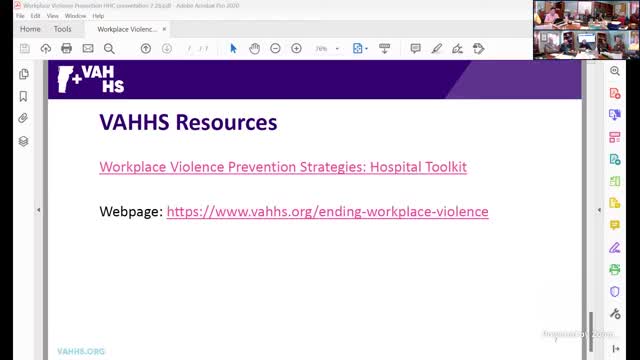Healthcare leaders discuss violence prevention strategies at state hearing
March 01, 2025 | Health Care, HOUSE OF REPRESENTATIVES, Committees, Legislative , Vermont
This article was created by AI summarizing key points discussed. AI makes mistakes, so for full details and context, please refer to the video of the full meeting. Please report any errors so we can fix them. Report an error »

Vermont's healthcare system is set to undergo significant changes aimed at enhancing safety for medical professionals and patients alike, following a recent government meeting focused on addressing workplace violence in healthcare settings. The discussions highlighted the urgent need for improved protocols and support systems to protect healthcare workers, who have increasingly faced violent incidents, particularly in emergency departments.
One of the key points raised during the meeting was the necessity of a robust handoff protocol for patients, especially those exhibiting violent behavior. Under current legislation, healthcare providers are required to continue care for patients in police custody, raising concerns about the safety of medical staff. Participants emphasized the importance of ensuring that healthcare workers are not placed in harm's way while fulfilling their duties. The conversation underscored the need for a balance between providing necessary medical care and maintaining a secure environment for staff.
Statistics shared during the meeting revealed a staggering annual expenditure of $847 million on workplace violence prevention nationwide, with healthcare workers disproportionately affected by such incidents. The data suggests that the situation has worsened since the pandemic, prompting calls for more effective strategies to mitigate risks. Attendees expressed frustration over the lack of progress in some hospitals, citing recent violent incidents involving staff members, which have led to concerns about retention and recruitment in the nursing profession.
The meeting also touched on the implementation of trauma-informed care, with participants advocating for a continuous improvement approach rather than a one-time checklist. This method aims to ensure that healthcare facilities are equipped to handle the complexities of patient care while being sensitive to the needs of both patients and staff.
As Vermont moves forward with these discussions, the implications for healthcare workers and the overall quality of care remain significant. The proposed changes aim not only to enhance safety but also to foster a more supportive environment for those dedicated to caring for the community. The ongoing dialogue reflects a commitment to addressing these critical issues, with stakeholders eager to see tangible outcomes in the near future.
One of the key points raised during the meeting was the necessity of a robust handoff protocol for patients, especially those exhibiting violent behavior. Under current legislation, healthcare providers are required to continue care for patients in police custody, raising concerns about the safety of medical staff. Participants emphasized the importance of ensuring that healthcare workers are not placed in harm's way while fulfilling their duties. The conversation underscored the need for a balance between providing necessary medical care and maintaining a secure environment for staff.
Statistics shared during the meeting revealed a staggering annual expenditure of $847 million on workplace violence prevention nationwide, with healthcare workers disproportionately affected by such incidents. The data suggests that the situation has worsened since the pandemic, prompting calls for more effective strategies to mitigate risks. Attendees expressed frustration over the lack of progress in some hospitals, citing recent violent incidents involving staff members, which have led to concerns about retention and recruitment in the nursing profession.
The meeting also touched on the implementation of trauma-informed care, with participants advocating for a continuous improvement approach rather than a one-time checklist. This method aims to ensure that healthcare facilities are equipped to handle the complexities of patient care while being sensitive to the needs of both patients and staff.
As Vermont moves forward with these discussions, the implications for healthcare workers and the overall quality of care remain significant. The proposed changes aim not only to enhance safety but also to foster a more supportive environment for those dedicated to caring for the community. The ongoing dialogue reflects a commitment to addressing these critical issues, with stakeholders eager to see tangible outcomes in the near future.
View full meeting
This article is based on a recent meeting—watch the full video and explore the complete transcript for deeper insights into the discussion.
View full meeting